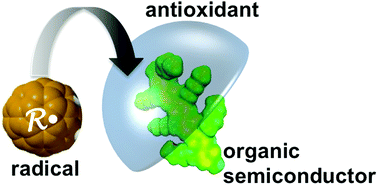当前位置:
X-MOL 学术
›
Energy Environ. Sci.
›
论文详情
Our official English website, www.x-mol.net, welcomes your
feedback! (Note: you will need to create a separate account there.)
Suppressing photooxidation of conjugated polymers and their blends with fullerenes through nickel chelates
Energy & Environmental Science ( IF 32.4 ) Pub Date : 2017-07-24 00:00:00 , DOI: 10.1039/c7ee01403a Michael Salvador 1, 2, 3, 4, 5 , Nicola Gasparini 1, 2 , José Darío Perea 1, 2 , Sri Harish Paleti 2, 6, 7 , Andreas Distler 2, 6, 7 , Liana N. Inasaridze 8, 9, 10 , Pavel A. Troshin 8, 9, 10 , Larry Lüer 11, 12, 13 , Hans-Joachim Egelhaaf 2, 6, 7 , Christoph Brabec 1, 2, 2, 6, 7
Energy & Environmental Science ( IF 32.4 ) Pub Date : 2017-07-24 00:00:00 , DOI: 10.1039/c7ee01403a Michael Salvador 1, 2, 3, 4, 5 , Nicola Gasparini 1, 2 , José Darío Perea 1, 2 , Sri Harish Paleti 2, 6, 7 , Andreas Distler 2, 6, 7 , Liana N. Inasaridze 8, 9, 10 , Pavel A. Troshin 8, 9, 10 , Larry Lüer 11, 12, 13 , Hans-Joachim Egelhaaf 2, 6, 7 , Christoph Brabec 1, 2, 2, 6, 7
Affiliation

|
Conjugated polymer semiconductors offer unique advantages over conventional semiconductors but tend to suffer from electro-optic performance roll-off, mainly due to reduced photofastness. Here, we demonstrate that the commodity nickel chelate nickel(II) dibutyldithiocarbamate, Ni(dtc)2, effectively inhibits photooxidation across a wide range of prototypical π-conjugated polymer semiconductors and blends. The addition of 2–10 wt% of Ni(dtc)2 increases the resilience of otherwise quickly photobleaching semiconducting thin films, even in the presence of detrimental, radical forming processing additives. Using electron spin resonance spectroscopy and sensitive oxygen probes, we found that Ni(dtc)2 acts as a broadband stabilizer that inhibits both the formation of reactive radicals and singlet oxygen. The mechanism of stabilization is of sacrificial nature, but contains non-sacrificial contributions in polymers where singlet oxygen is a key driver of photooxidation. Ultrafast pump–probe spectroscopy reveals quenching of triplet excited states as the central mechanism of non-sacrificial stabilization. When introduced into the active layer of organic photovoltaic devices, Ni(dtc)2 retards the short circuit current loss in air without affecting the sensitive morphology of bulk heterojunctions and without major sacrifices in semiconductor properties. Antioxidants based on nickel complexes thus constitute functional stabilizers for elucidating degradation mechanisms in organic semiconductors and represent a cost-effective route toward organic electronic appliances with extended longevity.
中文翻译:

通过螯合镍抑制共轭聚合物及其与富勒烯的共混物的光氧化
共轭聚合物半导体提供了优于常规半导体的独特优势,但往往会因电光牢度降低而遭受电光性能下降的困扰。在这里,我们证明了商品螯合镍(II)二丁基二硫代氨基甲酸酯镍(Ni(dtc)2)有效地抑制了广泛的原型π共轭聚合物半导体和共混物的光氧化作用。添加2-10 wt%的Ni(dtc)2可以提高原本快速光漂白的半导体薄膜的弹性,即使存在有害的自由基形成加工添加剂也是如此。使用电子自旋共振光谱法和敏感的氧探针,我们发现Ni(dtc)2作为宽带稳定剂,可抑制反应性自由基和单线态氧的形成。稳定化的机制是牺牲性的,但在单线态氧是光氧化的关键驱动因素的聚合物中包含非牺牲性的贡献。超快泵浦探针光谱揭示了三重态激发态的淬灭是非牺牲稳定的主要机制。当引入有机光伏器件的有源层时,Ni(dtc)2在不影响本体异质结的灵敏形貌且不牺牲半导体性能的情况下,可抑制空气中的短路电流损耗。因此,基于镍络合物的抗氧化剂构成了功能稳定剂,用于阐明有机半导体中的降解机理,并代表了一条经济有效的途径,可延长有机电子设备的使用寿命。
更新日期:2017-09-13
中文翻译:

通过螯合镍抑制共轭聚合物及其与富勒烯的共混物的光氧化
共轭聚合物半导体提供了优于常规半导体的独特优势,但往往会因电光牢度降低而遭受电光性能下降的困扰。在这里,我们证明了商品螯合镍(II)二丁基二硫代氨基甲酸酯镍(Ni(dtc)2)有效地抑制了广泛的原型π共轭聚合物半导体和共混物的光氧化作用。添加2-10 wt%的Ni(dtc)2可以提高原本快速光漂白的半导体薄膜的弹性,即使存在有害的自由基形成加工添加剂也是如此。使用电子自旋共振光谱法和敏感的氧探针,我们发现Ni(dtc)2作为宽带稳定剂,可抑制反应性自由基和单线态氧的形成。稳定化的机制是牺牲性的,但在单线态氧是光氧化的关键驱动因素的聚合物中包含非牺牲性的贡献。超快泵浦探针光谱揭示了三重态激发态的淬灭是非牺牲稳定的主要机制。当引入有机光伏器件的有源层时,Ni(dtc)2在不影响本体异质结的灵敏形貌且不牺牲半导体性能的情况下,可抑制空气中的短路电流损耗。因此,基于镍络合物的抗氧化剂构成了功能稳定剂,用于阐明有机半导体中的降解机理,并代表了一条经济有效的途径,可延长有机电子设备的使用寿命。









































 京公网安备 11010802027423号
京公网安备 11010802027423号